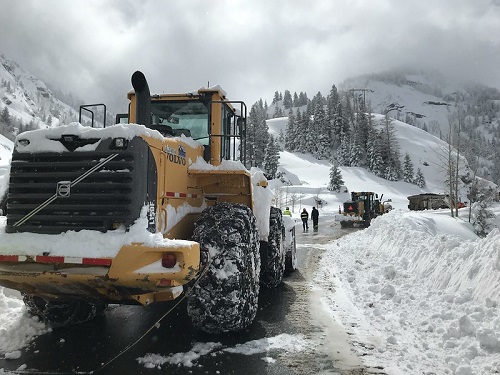The Colorado Department of Transportation and the Arizona Department of Transportation recently allocated millions in funding to report roads damaged by harsh weather during the 2022-2023 winter season.
[Above photo by the Colorado DOT]
The Colorado DOT received an additional $45 million from the state’s transportation commission of Colorado to fund snow and ice removal for the remainder of the winter season as well as address damage caused to state roads over the last few months beyond what they normally sustain each year.
Some $19.6 million of that $45 million will fund snow and ice operations above and beyond the agency’s original $84 million winter season budget, as Colorado DOT also exhausted a $12 million reserve fund due to the record winter.
[Editor’s note: The Wyoming Department of Transportation noted in the video below that the 2022-2023 winter season proved to be one of the busiest for its avalanche control division.]
The remaining $25 million will address critical pavement conditions across the state, such as the permanent repair of potholes, without having to delay any planned transportation projects scheduled for the 2023 construction season.
The agency said the 2022-2023 winter season is projected to wind up as the third or fourth snowiest winter in the last 50 years. The statewide snowpack is averaging 150 percent of normal, Colorado DOT said in a statement, as winter snowfall was well above average both west of the Continental Divide and over the far northeast plains.
The agency added that average temperatures recorded from October 2022 to March 2023 is the coldest period experienced by Colorado since 2010. March 2023 was the fifth consecutive month with below-average temperatures and the coldest March since 1970, Colorado DOT said.
Meanwhile, the Arizona Department of Transportation has reallocated $50.5 million to replace deteriorating pavement surfaces within 23 locations, most of them in northern Arizona, due to damage caused by winter weather – funding that comes from savings on other projects.
Those road repair projects are predominantly in areas where pavement was already stressed in recent years due to age and use, with the snow and rain generated by the record-setting winter creating “ideal conditions” for potholes and other road surface damage in these highway stretches. The agency said in a statement that, depending on the project, road repair work is expected to begin from mid-May into June.
 States
States
Dina El-Tawansy Appointed Director of Caltrans
July 11, 2025 States
States

